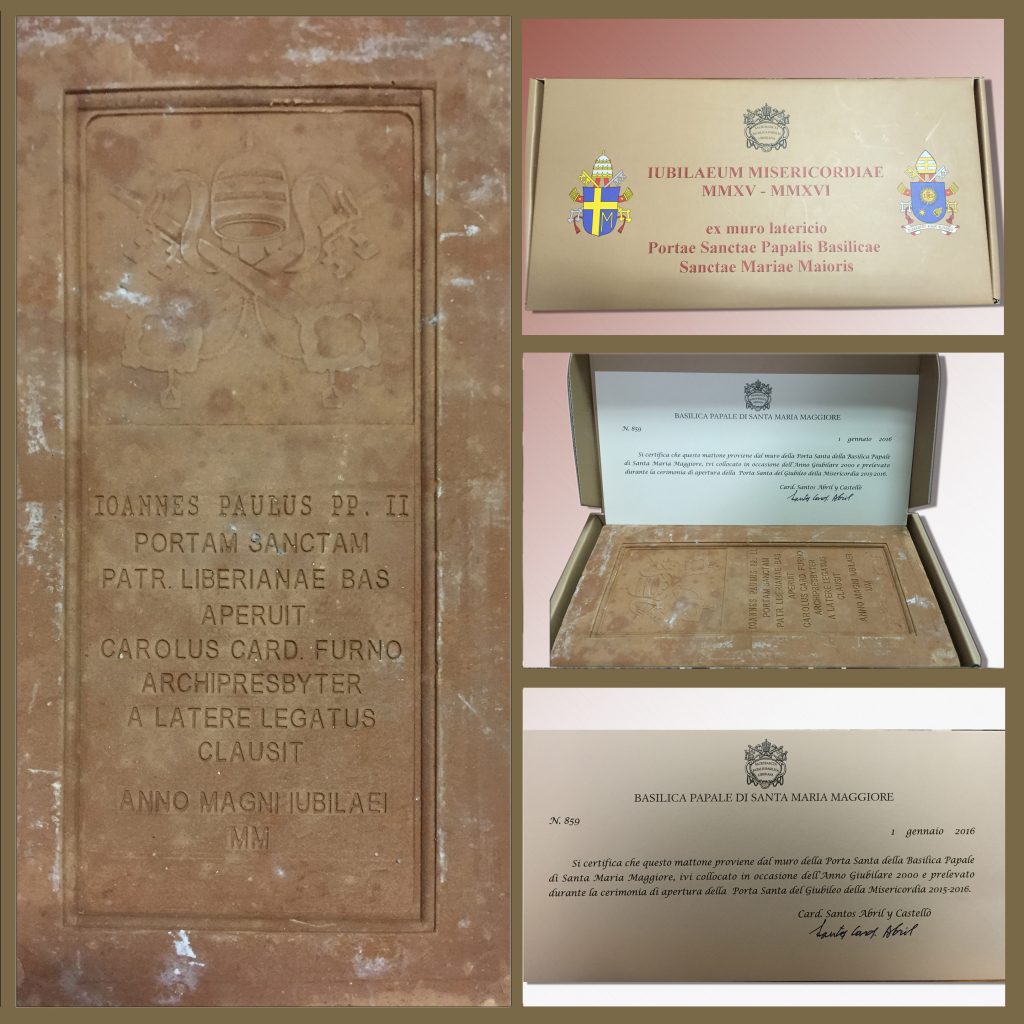On November 20, Pope Francis closed the Holy Door of St. Peter’s Basilica, thus closing the Holy Year of Mercy. Along with the papal basilicas of Rome (St. Peter’s Basilica, St. John Lateran, St. Paul Outside the Walls and St. Mary Major), there are four other holy doors in different parts of the world. In Spain there is the one in the Cathedral of Santiago de Compostela and the one in the Monastery of Santo Toribio de Liébana.
The doors are normally sealed from the inside so that they cannot be opened. They are opened during Jubilee years, when pilgrims enter through the doors to gain the plenary indulgence related to the Jubilee.
History of the holy doors
The tradition of a Holy Door during a Jubilee dates back to the 15th century. Pope Martin V opened the Holy Door for the first time in the history of the Jubilee in 1423 in the Basilica of St. John Lateran.
His successors, especially Pope Alexander VI in 1499, maintained this tradition and extended it to the four major basilicas, i.e., in addition to St. John Lateran, St. Peter’s Basilica in the Vatican, St. Mary Major and St. Paul Outside the Walls.
Before the Jubilee of the year 2000, it was customary for the Supreme Pontiff to open the Holy Door of St. Peter’s Basilica, and then delegate this power to a cardinal for the opening of doors in the other three basilicas.
Pope John Paul II broke with that tradition by performing the opening and closing of each of these doors himself. St. Peter’s Basilica remained the first to be opened and the last to be closed.
From 1500 to 1975 the Holy Door of the four Roman basilicas was closed on the outside by a wall and not by a door. Therefore, at the moment of the opening, the leaves of a door were not opened, but a wall was demolished: the Pope pulled down a part of it and the masons completed the demolition work. The act of inauguration consisted in the demolition of the wall, which also highlighted the exceptional side of the Jubilee. Therefore, the symbolism linked to the masonry tools used: a hammer to strike the wall, a trowel for the construction, bricks with inscriptions and pontifical marks, holy water to bless the stones and bricks, coins with the effigy of the Pope, which made it possible to date the construction of the wall of the Holy Door.
At Christmas 1975, modifications were made to the rite of closing the Holy Door. The Pope no longer used the trowel and bricks to begin the reconstruction of the wall, but simply closed the two sides of the door.
Although the wall enclosing the door was rebuilt inside the Basilica, the symbolism was changed to draw attention to the door and not so much to the wall.
A warm gift
In this Holy Year of Mercy. The Superior General of the Congregation of the Mothers of the Forsaken and St. Joseph of the Mountain, M. Mª Ángeles Vilar de San José, visited the community of the Royal Sanctuary of St. Joseph of the Mountain to present them with a special and symbolic gift: a brick from the Holy Door of the Basilica of St. Mary Major in Rome. A relic that Cardinal Santos Abril wanted to offer to the Congregation as a token of his appreciation and devotion to St. Joseph of the Mountain and Blessed Petra of St. Joseph. Beata Petra de San José.
The brick bears the inscription of the Jubilee of 2000, when the Holy Door was sealed until it was reopened for this Jubilee Year of Mercy that we have just closed.
Two bricks have been given by Cardinal Santos Abril to the Congregation of the Mothers of the Forsaken and St. Joseph of the Mountain. The General Council of the Congregation decided that one of them will remain in the Royal Shrine of Barcelona, where it will be exhibited so that all the faithful can see it and meditate on its meaning. The holy doors are a constant invitation to reconciliation, to turn our gaze inward to place our lives in God’s hands.



